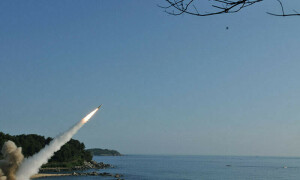
: Scientists are using the world's biggest telescope, buried deep under the South Pole, to try to unravel the mysteries of tiny particles known as neutrinos, hoping to shed light on how the universe was made.
The mega-detector, called IceCube, took 10 years to build 2,400 metres below the Antarctic ice. At one cubic km, it is bigger than the Empire State building, the Chicago Sears Tower — now known as Willis Tower — and Shanghai's World Financial Center combined.
Designed to observe neutrinos, which are emitted by exploding stars and move close to the speed of light, the telescope is attracting new attention in the wake of last week's discovery of a particle that appears to be the Higgs boson — a basic building block of the universe.
“You hold up your finger and a hundred billion neutrinos pass through it every second from the sun,” said Jenni Adams, a physicist at the University of Canterbury in New Zealand, who works on IceCube.
IceCube is essentially a string of light detectors buried in the ice through hot water drilling. When neutrinos, which are everywhere, interact in the ice, they produce charged particles that then create light, which can be detected.
The ice acts as a net that isolates the neutrinos, making them easier to observe. It also protects the telescope from potentially damaging radiation.
“If a supernova goes off in our galaxy now, we can detect hundreds of neutrinos with IceCube,” Adams told reporters at the International Conference on High Energy Physics in Melbourne.
“We won't be able to see them individually, but the whole detector will just light up like a massive fireworks display.”
Scientists are attempting to track the particles to discover their points of origin, in the hope that will give clues on what happens in space, particularly in unseen parts of the universe known as dark matter.
Before IceCube was completed in 2010, scientists had observed just 14 neutrinos. With the huge new instrument, paired with another telescope in the Mediterranean, hundreds of neutrinos have been detected.
So far, all of those have been created in the earth's atmosphere, but IceCube scientists hope to eventually detect those from space.







































